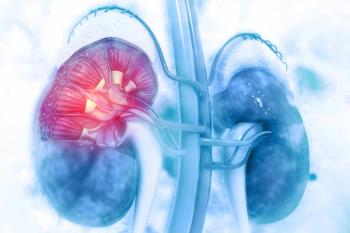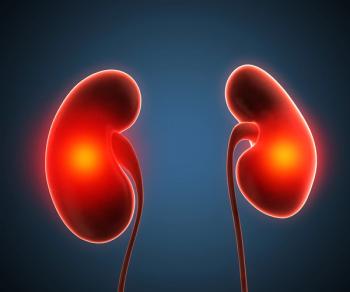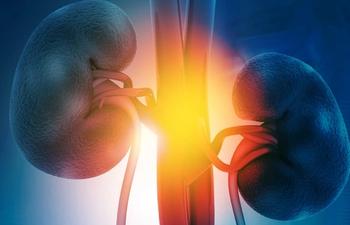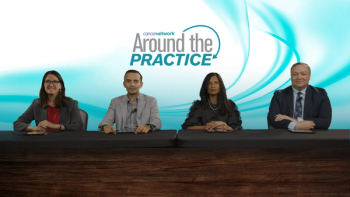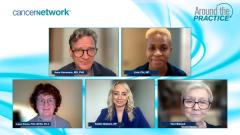
Managing Adverse Events While on Treatment for Renal Cell Carcinoma
Laura Sanza, PhD, MPAS, PA-C, leads a discussion on communicating adverse events with patients and mitigating potential toxicities.
Episodes in this series

Transcript:
Hans Hammers, MD, PhD: Linie, you are with me at the front lines to be honest with you, so you get all of the messages, you screen the initial phone calls and make my life easier, but you have a lot of responsibility looking at these and trying to triage and see what you need to do. You’re the initial communicator. How often do you contact patients? What do you organize for their follow-up? Are there certain situations where you are worried about them? What are some red flags, something like that in nature, what is your life at the front lines?
Linie Chi, NP: Usually, I come in at the part where I see the patients before you go in there and I see them after. When I go in there before you, I’m looking for who’s with them, who’s the support system, and how’s the interaction. If it’s a language barrier, it’s usually easier if there’s a family member who’s able to be a translator; you can always get an interpreter, but they always do better when there’s a family member there with them talking. For some reason with the interpreter, they have no idea who that is and you’re here for cancer. Usually, there’s a flow that just doesn’t work right at that time, so there’s that. I’m looking for how far away they live; if they are close, if they are going to be able to come on for their scans, if they can make their visits, or if it would it be easier for them to do telehealth visits. Do we need to find a LabCorp or a Quest, or primary care physician where they can get your labs done so you’re not coming over so often. When we go over to the MyChart’s, I try to tell them to send me a MyChart. I don’t care how many there are and I don’t care what time you call. There’s a triage person on and they’re always going to get the call and the message. I tell them that it doesn’t matter what you send me, it’s the same questions. I’m reinforcing what you tell them and I’m reinforcing what Laura tells them. I’m going over teaching and I’m trying to be really specific. Sometimes, I tell them, “I know that you don’t want to say it. I know I’m annoying. But you keep telling me, ‘I’m having diarrhea.’ But that’s expected with the medication.” And I’m like, “Well, how many is that?” It’s pushing, and I keep asking the same questions. How many is it? How often is it? Usually, then the details start coming out a lot more and that’s when I send it to you and Laura. Higher priorities would be what Laura said, there’s the headaches, there’s the nausea, vomiting, they can’t eat, those usually go at the top tier, or anything that wasn’t there the last time they came in. Something that’s new, something that’s getting worse, that’s the stuff that comes over to you all immediately. Then, there’s the ACC [Acute Care Clinic], which is amazing. Whenever I say emergency room, they complain of the wait, but with the Acute Care Clinic, they are always more open to that option because it’s linked with the cancer center and there’s Laura and Dr Hammers recommending this, so they will always have people wanting to come in more to the Acute Care Clinic than they are open to coming in to the emergency room. For the most part, that’s what I see with the MyChart’s and the calls when they came.
Hans Hammers, MD, PhD: Wonderful. We encourage communication because it’s really critical and it’s really what keeps things safe. Terri and Kaitlin, I know we talked a lot about the treatment choice, some of the potential side effects. Obviously, you’re doing well. I’m very happy for you, but it wasn’t an easy way and you had some side effects. Do you want to talk about some of those experiences?
Terri Blalock: I do have some side effects. They’re nothing major; it’s mostly joint pain. I don’t have the diarrhea or constipation. I’m very fortunate. It’s mostly joint pain, but we deal with it and I do come off the chemo every 3 to 4 months. I’ll take a week off just because I felt like I’m overloaded and that helps quite a bit.
Hans Hammers, MD, PhD: Do you make those decisions by yourself?
Terri Blalock: Kaitlin and I have discussed it. You had told me that I will know when I need to, so it’s not something that we’ve just made a decision on our own, so we did discuss it with you and you have recommended that we do that. I actually do my Lenvima 5 days on and 2 days off because doing the 7 days was just too much but, like I said, we did consult with you on it. We didn’t just jump in there on our own, and she can usually tell when I’m getting overloaded and need to take a real break.
Hans Hammers, MD, PhD: What are the symptoms that you had when we didn’t give you the break and when we were going full on?
Terri Blalock: It’s just that I’m really tired and don’t want to do anything. My body aches and needs to get rid of that, mainly the body aches and fatigue.
Hans Hammers, MD, PhD: Kaitlin, do you want to add anything to that?
Kaitlin Blalock, NP: A couple of other complications that she’s had is that she does have diarrhea every now and then, but it doesn’t last for more than a couple of episodes. She does have that every now and then, even though she doesn’t really talk about it. The other thing is that she’s had uncontrolled high blood pressure, so we see a cardiologist and they tweak her medications and she’ll be good for a month or so and then it shoots back up again and we have to tweak those medications with her cardiologist. Then, she had to be started on levothyroxine because of her thyroid since she developed hyperthyroidism as a side effect of the immunotherapy. But when she needs to take breaks, it’s mainly the fact that she just hurts in her joints and she doesn’t really get up or go do things that she normally does. So we have to discuss what we need to do. Do we need to take a break? We must talk about the joint pain with Dr Hammers or Laura, and see what your options are for that. She’s been very fortunate since all of the serious side effects she hasn’t really developed or experienced. She’s done very well on it, other than the fatigue and then the loss of appetite, but, fortunately, the Remeron [mirtazapine] does improve her appetite so she began eating again once we started her on that regimen.
Hans Hammers, MD, PhD: Very good. First, some of the side effects are actually very common like the high blood pressure. We are very fortunate at our institution since we have cardiologists who focus on cancer patients and are very responsive, so that’s something that other practitioners may not necessarily have ready access to, so it’s important to the blood pressure and elevations. Initially, that was one of the big one’s in your particular case, but you’re still at the highest dose, 20 mg, which is fantastic and you’re right at the border where we may dose reduce, or do this split of 5 days on and 2 days off. I love how you expressed that you have some autonomy in deciding when to take a break and that’s an initial learning curve where you experience the side effects because you will not get all of them that I mentioned. You may pick 1, 2, or 3, but we don’t know yet what they are. You have autonomy to decide I need a break, or maybe even the break may coincide with a trip somewhere, or a nice family gathering. The other thing that I loved is how Kaitlin reminded you of some of the side effects that you don’t like to talk about and that’s an important component of keeping things safe. If I see caregivers with a patient, I’m much more at ease because we like to empower caregivers to speak up, and I always say that if you don’t call Terri, Kaitlin will call, or the spouse, or the caregivers in the group. It’s important to encourage contacting us and giving feedback and expressing any concerns.
Transcript edited for clarity.
Newsletter
Stay up to date on recent advances in the multidisciplinary approach to cancer.




